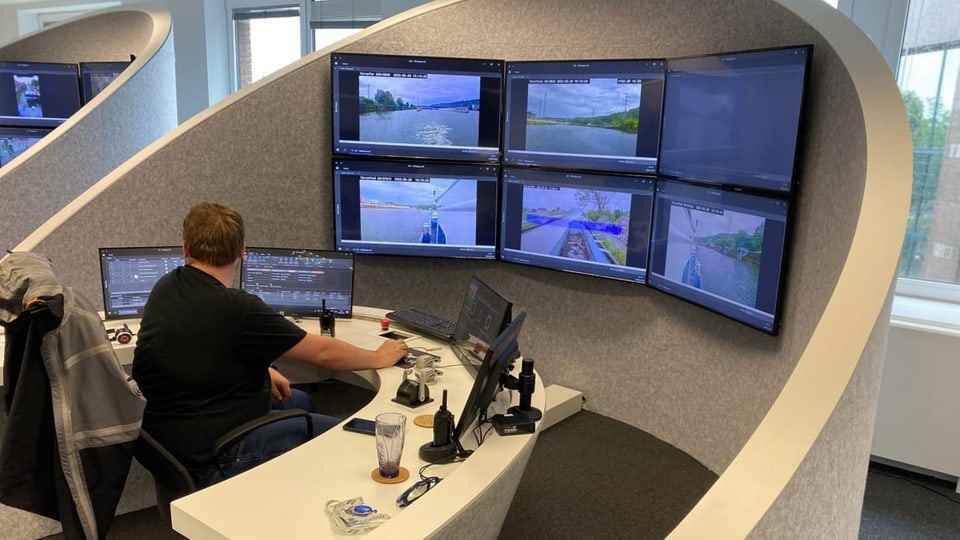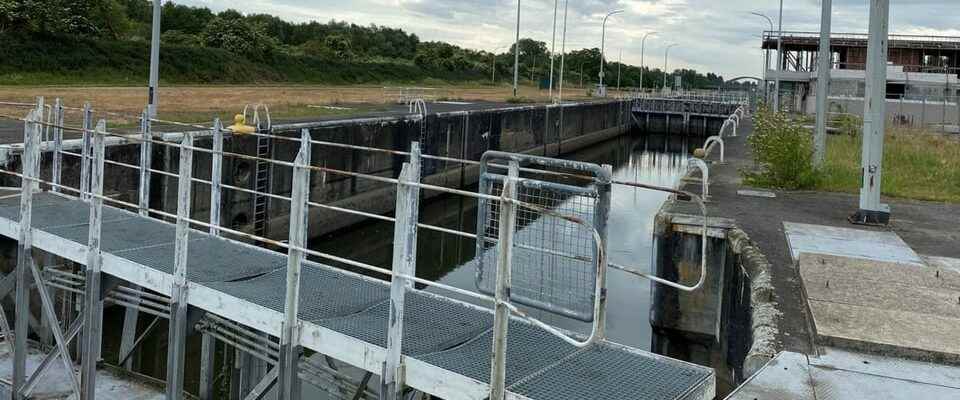contents
Inland navigation rediscovered for the climate: autonomously driving barges will soon revitalize the old canal system in Flanders.
Mayor Eric Thiébaut, move forward. Towards the big lock on the canal of his small community in south-west Belgium. He has been in office in Hensies for 30 years. He has never seen a ship go by on this waterway to France. Because inland shipping fell out of the zeitgeist.
Everything is there: mighty lock gates, the lock keeper’s house, the pumps. You just have to refresh it a bit and then put it into operation, explains Thiébaut.
Barge replaces up to 100 trucks
Today, transport ships make a long detour to get their goods from Antwerp to Paris, or back along the numerous canals that connect the Seine to the Rhine. The opening of the canal at the gates of Hensies would save ships half a day between Belgium and France.
Legend:
The lock of Hensies in south-west Belgium is waiting for a new life.
Charles Liebherr
Much can be gained by shifting the transport of goods from road to water: one ship replaces up to 100 trucks on the chronically congested roads in the region. Belgium, France and the Netherlands are therefore investing billions in modernizing historic waterways that are hardly ever used.
The transport industry must massively reduce its CO₂ emissions. Hence the rethinking, according to Eric Thiébaut: “There is no way around shifting more traffic to water and rail.”
Launch planned for 2023
Mud is now being dredged on the French side of the canal. The route should be free in a year. Perhaps Captain Antoine Roland will then be one of the first to steer his ship through the Hensies lock. It is one of four barges that he operates from his office: “There are days when I steer four ships at the same time from afar,” says Roland.
This is made possible by his employer, a young company in Antwerp. It specializes in remotely controlling inland vessels. Captain Roland works in a ship control center in the city center. Six skippers simultaneously steer 24 ships on all canals across Flanders.

Legend:
Seafar developed this navigation system for autonomous transport vessels. Each ship drives autonomously and follows a path predefined on the computer. The technology brings many advantages: The ships can continue to sail every day – without personnel on board.
Charles Liebherr
Thanks to artificial intelligence, freighters optimally adjust their speed before locks, waiting times are eliminated. That saves fuel and lowers operating costs, says the founder of the start-up, Robert Cool: “With autonomous ships, we optimize the operating times of a freighter enormously.”
Autonomous inland transport ships symbolize the far-reaching structural change in the industry. Shipping companies are expanding their fleets and investing in autonomously controlled transporters.
With technology against the shortage of skilled workers
Gone are the days when every captain owned his own ship and was out on his own for weeks. The current lack of specialist staff is also hampering the growth of the sector. Cool is convinced that autonomous ships are part of the solution. “Without them, we won’t be able to relocate – because of the shortage of skilled workers.”
Flanders in Belgium is the first region in Europe to allow autonomous ships. If the other countries in the region don’t follow suit soon, Captain Roland will never be able to let his remote-controlled ship pass the house of the mayor of Hensies. Finally, after 30 years of waiting.
